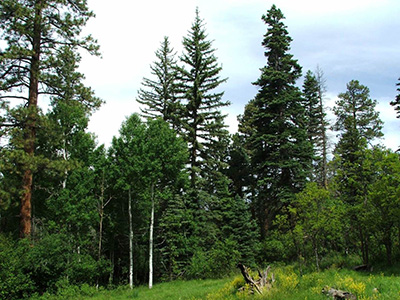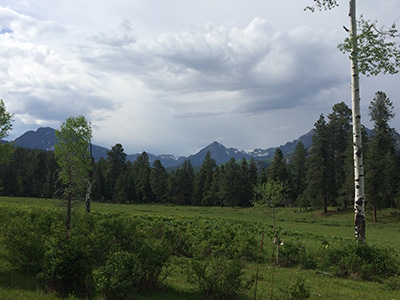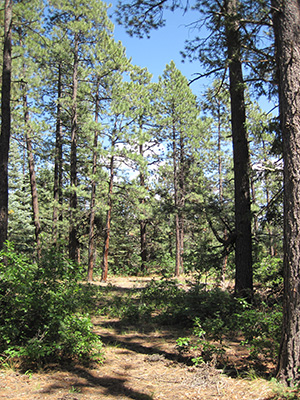A team of natural resource specialists from the San Juan National Forest, regional managers, and scientists came together for a three-day workshop to develop the study design for the ASCC project site. The team developed a set of Desired Future Condition statements, Objectives, and Tactics for each major climate adaptation trajectory (resistance, resilience, transition). These three trajectories are briefly summarized below:
RESISTANCE

maintain relatively unchanged conditions over time
Management Goal:
- Retain the same species composition as in pre-harvest stand of ponderosa pine, Douglas-fir, and aspen, with a slight reduction in white fir, and maintain all species, especially if poorly represented
- Maintain even and consistent spacing
- Retain stand structure to resist the increase of growing space for shrub components and the likelihood of creating a new cohort of conifers that would act as ladder fuels to the existing co-dominants and dominants in the stands
Strategies & Approaches:
- Thin to 60-90 ft2/acre
- Maintain even and consistent spacing
- Retain the same species composition as in pre-harvest stand of ponderosa pine, Douglas-fir, and aspen, with a slight reduction in white fir
- Retain stand structure to resist the increase of growing space for shrub components and the likelihood of creating a new cohort of conifers that would act as ladder fuels to the existing co-dominants and dominants in the stands
RESILIENCE

allow some change in current conditions, but encourage eventual return to original conditions
Management Goal:
- Heavily favor fire-adapted and drought tolerant species across all size classes and create openings in the stand
- Create high variability in spacing with openings up to 1 acre
- Expand openings off of existing natural openings in the stand structure
- Retain trees in closely spaced legacy groups with multiple size classes and species
- Increase drought-tolerant and fire-adapted species (ponderosa pine and Douglas-fir)
Strategies & Approaches:
- Thin to 60-80 ft2/acre
- Create high variability in spacing with openings up to 1 acre
- Expand openings off of existing natural openings in the stand structure
- Retain trees in closely spaced legacy groups with multiple size classes and species
- Increase drought-tolerant and fire-adapted species (ponderosa pine and Douglas-fir)
TRANSITION

actively facilitate change to encourage adaptive responses
Management Goal:
- Increase drought-tolerant and fire-adapted species (ponderosa pine and Douglas-fir). Remove all white fir
- Create high variability in spacing with a canopy openness target of 30-40%, average 40 ft2/acre of basal area
- Maintain aspen in swales on north slopes
Strategies & Approaches:
- Create high variability in spacing with a canopy openness target of 30-40%, average 40 ft2/acre of basal area
- Increase drought-tolerant and fire-adapted species (ponderosa pine and Douglas-fir)
- Maintain aspen in swales on north slopes
- Remove all white fir


